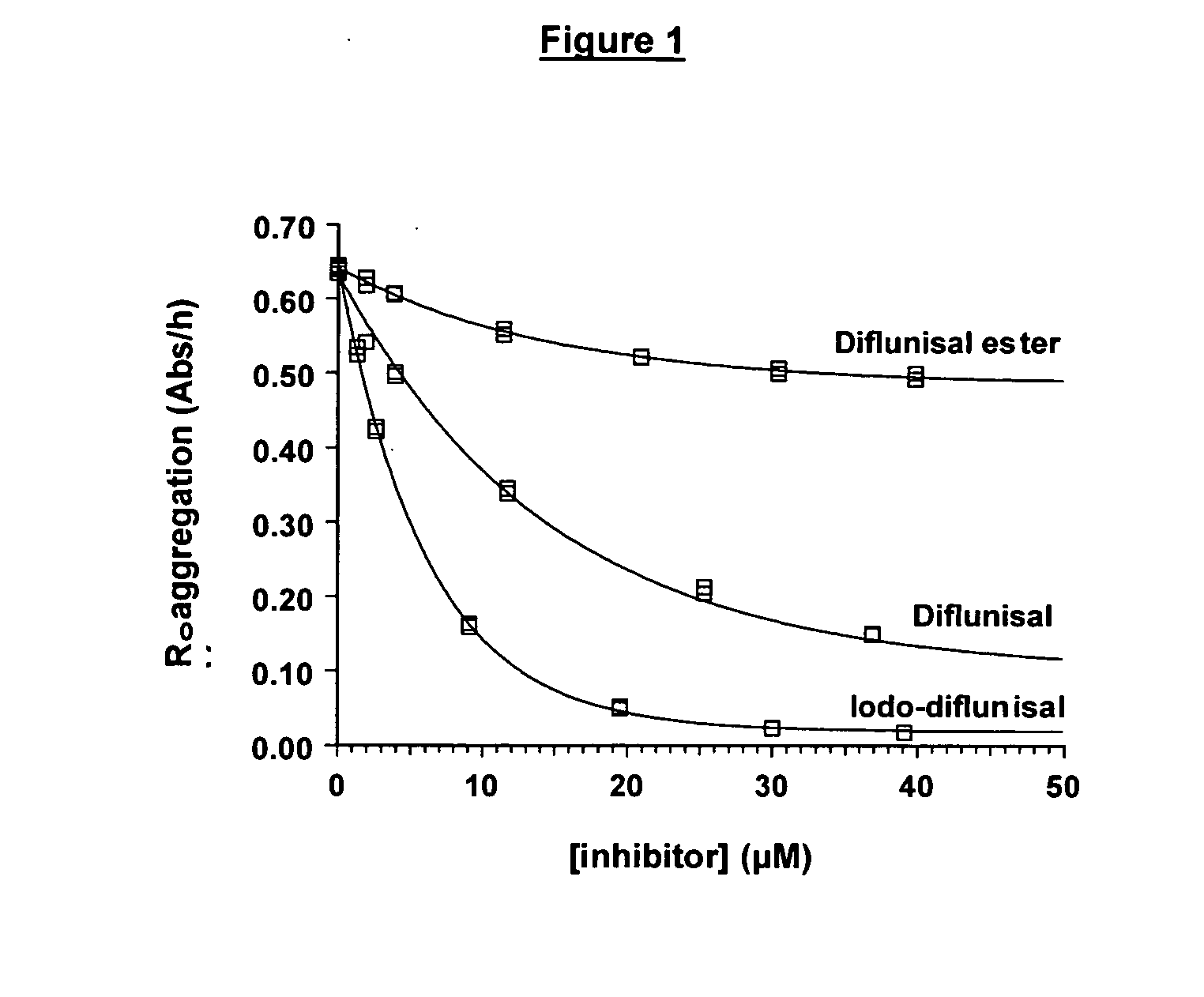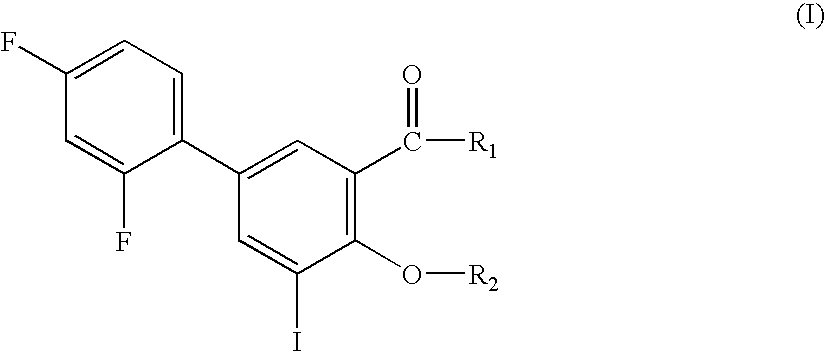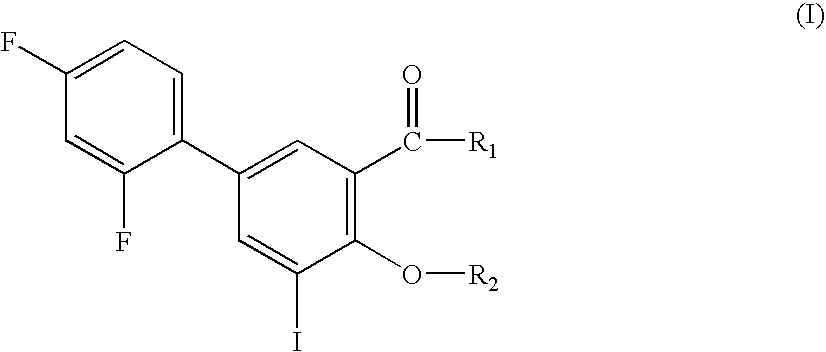Compounds useful for the treatment of diseases associated with the formation of amyloid fibrils
a technology of amyloid fibrils and compounds, which is applied in the direction of sugar derivatives, aminosugars, biocides, etc., can solve the problems of gastrointestinal and cardiovascular side effects
- Summary
- Abstract
- Description
- Claims
- Application Information
AI Technical Summary
Benefits of technology
Problems solved by technology
Method used
Image
Examples
examples of preparation
Example 1
5-(2,4-difluorophenyl)-3-iodo-salicylic acid
[0057]
[0058] By iodination of 5-(2,4-difluorophenyl)salicylic acid (diflunisal) with the reagent bis(pyridine)iodonium (I) tetrafluoroborate (Ipy2BF4)
[0059] 357 mg (1.2 mmol) of Ipy2BF4 was added to a solution of 200 mg (0.80 mmol) of diflunisal in 5 ml of dichloromethane at room temperature. It was stirred until the consumption of starting product was observed by HPLC (high performance liquid chromatography). It was diluted in dichloromethane and the product was worked up by acidification with 1 N HCl acid and extraction with dichloromethane. The organic phases were combined and washed with a solution of sodium thiosulphate and then dried over anhydrous magnesium sulphate. The solvent was removed at low pressure and a crude of 98% purity was obtained and then purified by chromatography on silica gel. 290 mg (96% yield) of the desired product was obtained.
example 2
5-(2,4-difluorophenyl)-3-iodo-salicylic acid
[0060]
[0061] By iodination of 5-(2,4-difluorophenyl)salicylic acid (diflunisal) with the reagent bis(2,4,6-trimethylpyridine)iodonium hexafluorophosphate (I) (ICOll2PF6)
[0062] 617 mg (1.2 mmol) of IColl2PF6 was added to a solution of 200 mg (0.80 mmol) of diflunisal in 5 ml of dichloromethane at room temperature. It was stirred until the consumption of starting product was observed by HPLC. It was diluted in dichloromethane and the product was worked up by acidification with 1 N HCl acid and extraction with dichloromethane. The organic phases were combined and washed with a solution of sodium thiosulphate and then dried over anhydrous magnesium sulphate. The solvent was removed at low pressure and a crude of 98% purity was obtained and then purified by chromatography on silica gel. 260 mg (86% yield) of the desired product was obtained.
example 3
5-(2,4-difluorophenyl)-3-iodo-salicylic acid
[0063]
[0064] By iodination of 5-(2,4-difluorophenyl)salicylic acid (diflunisal) with chloramine-T (CAT) and sodium iodide.
[0065] 20 mg (0.08 mmol) of diflunisal, 14 mg (0.093 mmol) of Nal and 30 mg (0.13 mmol) of CAT dissolved in 1040 μl of acetonitrile and 52 μl of acetic acid are placed in a 25 ml flask. It was stirred for 1.5 hr at room temperature. The reaction was monitored by HPLC until the consumption of starting product was observed and 96% of iodinated product was detected. The solution was then acidified to pH=1.0 with a 5% solution of HCl and extracted with ethyl acetate. The organic phases were combined and washed with a solution of sodium thiosulphate and then dried over anhydrous magnesium sulphate. The solvent was removed at low pressure and a crude of 98% purity was obtained and then purified by chromatography on silica gel. 260 mg (86% yield) of the desired product was obtained.
PUM
| Property | Measurement | Unit |
|---|---|---|
| mass | aaaaa | aaaaa |
| temperature | aaaaa | aaaaa |
| temperature | aaaaa | aaaaa |
Abstract
Description
Claims
Application Information
 Login to View More
Login to View More - R&D
- Intellectual Property
- Life Sciences
- Materials
- Tech Scout
- Unparalleled Data Quality
- Higher Quality Content
- 60% Fewer Hallucinations
Browse by: Latest US Patents, China's latest patents, Technical Efficacy Thesaurus, Application Domain, Technology Topic, Popular Technical Reports.
© 2025 PatSnap. All rights reserved.Legal|Privacy policy|Modern Slavery Act Transparency Statement|Sitemap|About US| Contact US: help@patsnap.com



